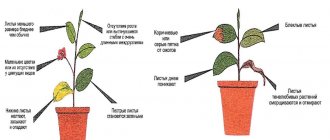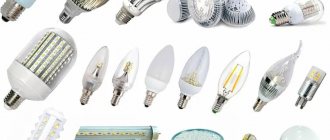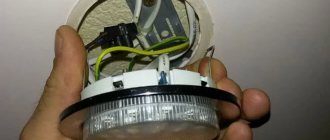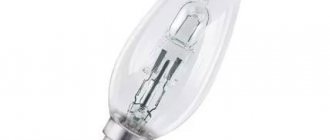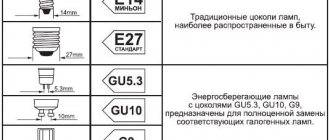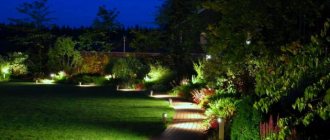Success in growing greenhouse plants largely depends on the availability of the basic factors for any crop - moisture and light. Lighting in a greenhouse, as well as timely watering, determines the development of plant cells, shoot growth, flowering and timely fruiting. But not every light is useful for seedlings; in some situations, crops may wither or produce wild shoots instead of a voluminous harvest, or the fruits may turn out to be inedible. In order to prevent damage to the vegetation in the greenhouse due to poor-quality lighting, it is worth understanding the basic rules and requirements for its arrangement.
Light and its importance for plants
With a lack of daylight in winter and autumn, crops begin to wither and become sick. The key to the survival and healthy existence of plants is photosynthesis. Full photosynthesis is impossible without light. When plants produce chlorophyll, they fully absorb the carbon dioxide needed for nutrition. The formation of organic substances in greenhouse crops is impossible without solar and artificial lighting.
Signs of lack of lighting:
- changes in plant shape (for example, unnatural elongation of cuttings and stems);
- their slow growth;
- lack of flowering;
- drop in yield;
- the lower foliage turns yellow.
You may be interested in:
DIY lighting for seedlings Not a single living organism is capable of existing without light. Plants, especially in the initial stages, need...Read more...
Light spectrum and its influence
Plants respond best to red and blue rays of the light spectrum. When lighting a greenhouse in winter, you need to ensure that the crops are not deprived of natural light. Also, you should not use rays of only one spectrum, if we are not talking about colors. This is useful for flowers: their color becomes rich and bright.
Rays of light affect greenhouse crops in different ways. Blue light stimulates photosynthesis, orange and red improve flowering. There should not be many of these flowers, otherwise the plants die. Ultraviolet radiation promotes the formation of vitamins. Thanks to it, the seedlings become resistant to winter cold.
Important!
Green and yellow lights cannot be used. Plants become deformed and their stems become thin.
When selecting lamps for a greenhouse, their colors should be different. When installing equipment, it is important to comply with lighting standards in accordance with the requirements in the region and the characteristics of the crops.
List of used literature
- N. Kostina-Cassanelli “Secrets of the early harvest. All about greenhouses, greenhouses and seed preparation" 2017
- Gavrilenko A. P. “LED light for greenhouses” 2016
- Ktitorov A.F. “Practical guide to installing electric lighting” 1990
- V.M. Zhabtsev “The Big Book of Electricians” 2017
- G.M. Knorring, I.M. Fadin, V.N. Sidorov “Reference book for the design of electric lighting” 2010
- M.Yu. Chernichkin “All about electrics. Modern illustrated encyclopedia" 2016
Night illumination
The use of lighting devices around the clock will not benefit plant crops. They need about 6 hours of complete darkness to rest. There are vegetables, berries and plants that need individual lighting conditions.
Cucumbers cannot tolerate a pause between different types of light. When growing cucumbers, natural and artificial lighting should alternate evenly. After the first cucumber seedlings sprout, they need to be illuminated regularly. Onions and herbs need additional lighting only at the initial stage of growth. Strawberries require additional lighting during the day and at night.
Sodium lamps for greenhouses - which ones to choose?
Most often used:
— tubular (DNaT) , inexpensive, but requiring the use of lamps with reflectors and all the problems of cleaning these reflectors;
— mirror (DNa3) lamps with a silver reflector inside the lamp are more expensive, but they produce 20% more light with the same power consumption as DNAT and do not require maintenance during the entire service life. Plus, the wide CSS of REFLAX mirror lamps creates volumetric light, similar to natural light, evenly illuminates each plant with several adjacent lamps, which in practice gives an increase in yield by 20-25%:
Illumination of cucumber light culture: cosine CSS (HPS + reflector).
Lighting for cucumber light culture: wide CSS (DNaZ Reflex).
When choosing lamps for greenhouses, you should be careful when using 1000 W power, since the greenhouse material may be sensitive to heat. Even though the top of the mirror lamp heats up slightly.
With the help of gas-discharge sources of artificial lighting, crops in garden greenhouses can be harvested from early spring to late autumn. Or organize year-round cultivation of vegetables and herbs.
Lighting time
The lighting time depends on how light-loving the crop is. For tomatoes, cucumbers, salads and bell peppers, the length of daylight should be 10 hours or more.
There are short day plants. It is the short daylight hours that cause them to begin to bloom. When daylight hours become longer, their growing season comes to an end and they begin to develop as usual. In long-day plants, flowering occurs when the daylight hours are more than 13 hours. If it is shorter, their fruits will become small or stop appearing altogether.
There are cultures for which the length of daylight hours does not matter. They grow independently of it, the main thing is that there is not too little light. If there is not enough of it, the plants will die.
Range of REFLUX lamps for greenhouses:
— DNAT super 400W / 220, tubular, external reflector required, luminous flux 56,000 lm
— DNAZ Reflax with a power of 400 W / 220 V, mirror, 54,500 lm, one lamp is enough for an area of up to 4.5 square meters. m
— DNAT super 600W / 220V, tubular, external reflector required, 90,000 lm,
— DNAZ Reflex power 600 W / 220V, mirror, 88,000 lm, one lamp is enough for an area of up to 6.5 square meters. m
— DNAZ Reflex power 600 W / 400V, mirror, 90,000 lm, one lamp is enough for an area of up to 6.5 square meters. m
— DNAT 1000-1/220V, tubular, external reflector required, 130,000 lm,
— DNAZ Reflex power 1000 W / 400V, mirror, 140,000 lm, one lamp is enough for an area of up to 10.5 sq. m
REFLUX sodium lamps for greenhouses are the best solution for supplementary illumination of plantings in closed ground and obtaining the maximum possible yield.
Types of greenhouse lamps
You can illuminate a greenhouse with several types of lamps:
- incandescent;
- luminescent;
- sodium;
- mercury;
- metal halide;
- LED;
- infrared.
Incandescent lamps
They illuminate the greenhouse room well and also warm the air a little. Their disadvantage is that they consume a lot of electricity and have low efficiency. Their incandescent spectrum is 600 nanometers. If plants are overheated, they will get leaf burns. Burns occur due to excess infrared, orange and red light. Also, when overheated, the stems become unnaturally stretched, and the foliage becomes deformed, becoming small and limp.
Fluorescent lamps
The color spectrum of fluorescent light bulbs works well for greenhouse crops. They last a long time and their cost is low. These lamps work in the same way as energy-saving lighting fixtures, but can illuminate a larger area. These are fluorescent lamps: they illuminate both seedlings and grown plants. For their installation, metal boxes are used, as well as special lighting fixtures made of plastic.
Sodium lamps
These are economical light bulbs that operate under high pressure. Previously, their color spectrum was only red-orange, close to the rays of the sun. There were few blue rays from sodium lamps. In this regard, a modification was made, as a result of which lamps with a blue spectrum of light rays appeared.
On a note!
Despite improvements, sodium-based lamps attract harmful insects. This makes them difficult to use in greenhouses and greenhouses.
Mercury vapor lamps
Mercury lamps provide near-ultraviolet light that is beneficial for crops. These are compact and bright light sources. Ultraviolet light helps to activate photosynthesis processes, but it should not be abused. The use of mercury lamps is possible provided they are combined with natural lighting. They are used when the fruits begin to ripen. To work with mercury, a stable voltage in the electrical network is required. In this case, differences of no more than 5% are allowed.
Metal halide lamps
The light spectrum of metal halide lamps is well suited for plants. These light sources are compact but difficult to install. After their service life has expired, they must be recycled and not thrown into the general garbage chute. Despite this specificity, metal halide lamps have a high level of light transmission. They are ideal as daytime lighting sources if the mains voltage is not subject to strong surges. With the slightest change in voltage, the color spectrum of these lamps will change. If the light source is turned off, a short time must pass before operation is restored.
Not every gardener can afford to use metal halide lamps due to their high price and sensitivity to mains voltage.
LEDs and their applications
LED lamps are so diverse that you can choose any color spectrum by making a combination of several lamps. Gardeners select different colors for each plant crop. LEDs last a long time and consume minimal electricity. They are placed at different heights, adjusting the light intensity. Light bulbs that produce blue colors are suitable for seedlings. For fruit ripening, rays of the red and orange spectrum are used. It is necessary to take into account the sensitivity of LEDs to voltage changes and monitor the condition of the electrical wiring. If the electrical wiring is in good condition, they will justify their cost in the first season of use.
Ultraviolet lamps
They work in the same way as fluorescent lighting sources. Ultraviolet radiation appears in the flask container. It appears due to the reaction between mercury and an electromagnetic discharge. The gas discharge tube is made of uvila or quartz glass, which transmits UV radiation. Uviol glass is considered safe because it produces less ozone. The composition of glass used to make UV lamps varies. This allows you to create light sources that operate in a specific color range.
Infrared heaters
They are used to heat plants. Infrared light sources are classified as energy-saving systems. They create a favorable microclimate in the greenhouse. Thanks to him, cultures develop no worse than in the natural environment. The luminaires are equipped with a manual or automatic control function that allows you to control and change the indoor air temperature. Convector heaters can only heat air.
Information!
Infrared lamps first give off heat to plants and the ground and only then heat the air.
Greenhouse electrification
Step 1. First you need to draw a detailed plan indicating the locations of light sources, switches and wire routes.
How to properly place plant lighting
This greenhouse lighting diagram shows power outlets at both ends, four HID lights above the growing areas, fluorescent lights above the aisle for general lighting, and outlets for heat mats and power tools
Step 2. The required footage of wires, the number of junction boxes, lamps, switches and auxiliary materials are calculated.
Table of recommended lighting power relative to greenhouse area
Advice! Wires should be preferred with a cross-section of at least 2x2 cm. To facilitate future wiring repairs, you can use wires of different colors. One color will indicate phase, the other will indicate zero.
Step 3. Everything you need is purchased (with a small reserve). All elements must be moisture resistant.
Step 4. The wire is removed from the distribution panel located in the building. An automatic greenhouse switch is installed in the common meter of a residential building.
Distribution panel
Step 5. Electrical wiring to the greenhouse is carried out.
Example of electrical circuit diagram in a greenhouse
Method A - underground:
- a trench is dug at least 80 cm deep; it should not intersect with the drainage;
- the wire with a protective screen must be covered with tiles in order to protect it in the future when digging up the earth.
Underground cable laying diagram
Laying electrical cable in a trench
Method B - by air:
- pillars are installed;
- at a safe height, the cable is tied to the wire connecting the two poles.
Cable supply by air
Electrical wiring must be located away from trees, which can break the cable with branches in a strong wind.
The nuances of laying electrical wiring in a greenhouse
Step 6. The cable is connected to the shield inside the greenhouse.
Step 7. Wires in a special corrugation are routed to sockets and switches. All fasteners and terminal blocks are insulated.
Connecting a corrugated wire to an outlet
Connecting wires with a screw terminal block
VAGO clamp for connecting wires
PPE cap for connecting single-core wires
How do different greenhouses light up?
Polycarbonate greenhouses are often found in summer cottages and private areas. Greenhouse structures for industrial purposes are made of glass. Different types of greenhouses use different light sources, depending on the crops growing in them.
You may be interested in:
Radishes in a greenhouse in winter: cultivation and care, cultivation as a business Seasonal cultivation of radishes in a greenhouse in winter is a task that beginners can do. The first rule is choice...Read more...
Lighting for polycarbonate structures
Small greenhouses are built from polycarbonate for growing homemade vegetables, fruits, and berries. The good light transmittance of polycarbonate sheets makes it possible not to use additional light sources in the summer. In autumn, winter and early spring you need to learn the right combination of natural and artificial lighting. If you calculate everything correctly, you can make a profit from every square meter of a greenhouse or greenhouse.
The following are used as artificial light sources:
- fluorescent lamps;
- LEDs;
- ultraviolet.
Industrial greenhouse complexes
Incandescent lamps are not used in industrial greenhouses. For lighting industrial greenhouse complexes the following is used:
- sodium lamps;
- metal halide lamps.
As already noted, the light spectrum of sodium lamps is similar to sunlight. Despite the risk of attracting harmful insects, sodium light sources are economical and can be used for a long time. Growers value sodium lamps for their red and blue spectra, which are necessary for all types of crops.
The wide spectrum of radiation of metal halide lamps also allows them to be used on an industrial scale. The high price does not stop professional growers, because metal halide lamps are compact and have a wide light spectrum.
Light in the greenhouse
Natural light is ideal. In order to provide them with the maximum amount of plants, the greenhouse should initially be installed taking into account the location to the cardinal points. The greatest amount of light enters the greenhouse in the north-south direction. The design of the greenhouse itself plays a significant role.
Correct location of the greenhouse on the site
Illumination of greenhouses of various designs
If one of the walls of the greenhouse is in contact with the building, it (the wall) is made reflective using mirrors or foil or painted with glossy white paint.
How different plants are lit
Some gardeners consider cucumbers to be an unpretentious crop, but this is not entirely true. If there are signs of a lack of light, care should be taken to install additional lamps. Cucumbers do not like a long break between lighting day and night. This can cause their growth to slow down and small, flaccid fruits to appear. To automatically illuminate cucumbers at any time of the day, you can use light relays.
Cucumbers should be continuously illuminated for 10-12 hours, after which they need a break of about 6 hours. At this time they need complete darkness. To stimulate the growth of cucumbers, blue spectrum lamps are needed, and during the flowering period, light sources with a red radiation spectrum will be needed.
Onions can grow well in natural light, but sometimes they need additional lighting. Phytolamps are most often used. The onion leaves become elastic, and the fruits become large and hard.
For strawberries grown in a greenhouse, fluorescent lamps 1 m long are suitable. Their power should be from 40 to 50 W. With one device you can provide light to 3-6 m2 of greenhouse space. For strawberries, 130 to 150 lux is enough, which it will regularly receive for 12-14 hours. In this case, only the warm spectrum is used.
Strawberries need constant daylight (from 14 to 18 hours a day). Under natural conditions, it begins to bloom in May. When grown in a greenhouse, daylight hours are increased by using neon, fluorescent or mercury light sources. This stimulates photosynthesis processes: the strawberry foliage will become a deep green color. When using artificial lighting, strawberries ripen much earlier than in the natural environment.
In the first days of growth, tomato seedlings are illuminated for 20 hours, gradually reducing the lighting intensity to 16-12 hours a day.
Norms and requirements
Plants react differently to light radiation. Therefore, before purchasing and installing phytolamps in a greenhouse, you need to know what spectra crops need for growth and development.
Yellow and orange light 600-620 nm is not suitable for flowering and fruit-bearing plants. However, it stimulates the elongation of stems in ornamental crops. Red spectrum 630-660 nm – necessary for any plants at all stages of growth for accelerated development, flowering and fruiting. Blue light 400-520 nm also stimulates the growth and development of crops, activating photosynthesis processes. Strengthens the root system, increases green mass. Green spectrum 500-600 nm - in combination with blue light, promotes the formation of chlorophyll in chloroplasts and the accumulation of vitamins. However, if you install only green spectrum phytolamps, this can harm the plants. Ultraviolet 280-400 nm – increases green mass and strengthens the root system of crops. In addition, under the influence of ultraviolet radiation, harmful bacteria die and plants grown in greenhouses develop better and faster. Infrared light from 780 nm is close to sunlight, thanks to which plants quickly grow, bloom and bear fruit. However, long-term exposure to such radiation is detrimental to most crops. Violet spectrum 400-430 nm - through this lighting, plant trunks are strengthened and their resistance to external factors increases.
To select a phytolamp, you should pay attention to the spectrum it emits. Many modern models combine a combination of several types of lighting. Then it all depends on the type of plant being grown and the result you want to achieve. You can install different phytolamps in a greenhouse and see how they affect crops.
Calculation of the amount of lighting for greenhouses
To calculate the required number of lux per greenhouse, use the formula F=ExS/Ci. Wherein:
- F—light flux;
- S is the area of the illuminated room;
- Ki is the coefficient of application of luminous flux. For light sources with a built-in reflector, it is 0.8. For lamps with an external reflection source - 0.4.
For example, we have a greenhouse with an area of 14 m2. 12,000 lux can be taken as the lighting level. We make the following calculation:
14,000x12:0.4. We get 420,000 lumens.
Attention!
The formula helps to make an approximate calculation. To obtain accurate data you will need a lux meter.
One plant is illuminated with a lamp with a power of 20 to 30 W. The height of its placement should be 50-300 mm. For group planting, you will need lamps with a power of 50 W each. The distance from the light source to the upper leaves of the plant is from 400 to 600 mm. If the greenhouse is large, the power can be increased to 100 W. Large winter greenhouses are often illuminated with 250 W lamps, which are located at a height of 1 to 2 m.
How to choose lamps for a greenhouse and calculate their number
The most popular are LED phytolights for plants and sodium lamps. They lead in energy consumption, luminescence spectrum and radiation power. Infrared lamps are used only for heating, and they have to be supplemented with other equipment.
Tomatoes require at least 15 hours of light, cucumbers - 12 hours. The greenery will delight you with its harvest, even if the illumination lasts only 10 hours during the day.
In order for the lighting of a greenhouse for growing plants to be effective, you need to calculate in advance how many lamps you will need.
Before calculating lighting for a greenhouse, you need to consider:
- the selected type of lamp and its power;
- type of culture that needs additional lighting;
- height of placement of lamps;
- time of year for additional lighting;
- area of a greenhouse or other room.
On average, to illuminate 1 square meter of a greenhouse you need a lamp with a power of 70-100 W. If, for example, the area of the greenhouse is 6 sq.m., then for it you can choose 4 HPS lamps of 150 W each or approximately 20 pieces of LED greenhouse phytolamps with a power of 25 W. You can also make calculations using special online calculators.
